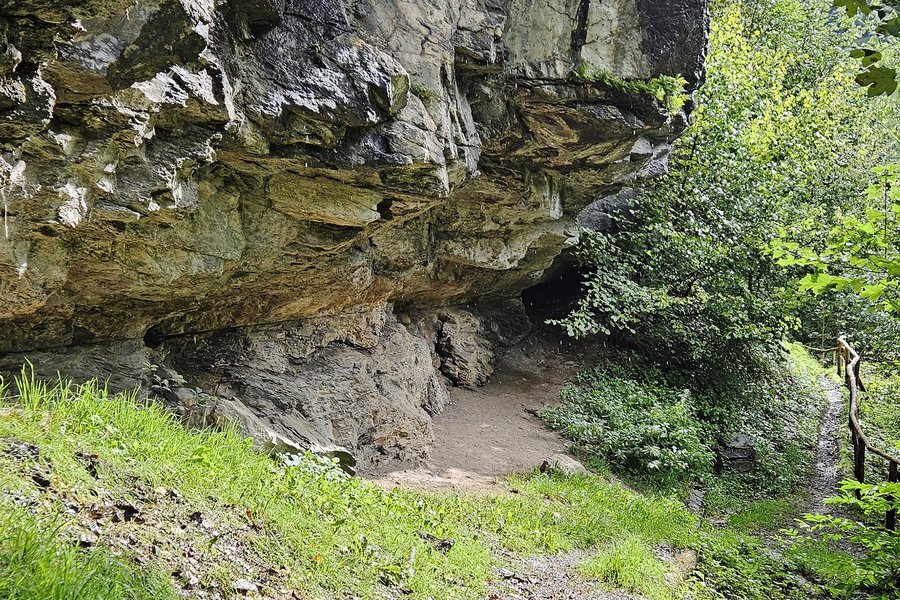
When I visited the castles in Bellinzona a little over a week ago, there was a UNESCO exhibit in one of the rooms allowing visitors to vote for their favorite Swiss World Heritage Site. Not surprisingly, the local site took first, but I was a bit surprised to see that the least popular site (underperforming against both pile dwellings and a beech forest) was the Swiss Tectonic Arena Sardona. That's a shame, since it was quite an extraordinary place to visit. I can only assume the tectonic arena may be just off the beaten path for most visitors to Switzerland, who gravitate to more popular mountain peaks.
The Swiss Tectonic Arena Sardona is a photogenic region of mountains south of the Walensee in eastern Switzerland, not far from the border with Liechtenstein. The site was inscribed as a World Heritage Site under Criteria VIII for its rich geologic history. Two Swiss geologists, Arnold Escher von der Linth and Albert Heim, and a French geologist, Marcel Bertrand (son of the mathematician Joseph Bertrand), studied the mountains in this area extensively in the 19th century to determine why exposed layers of older rock were found over layers of younger rocks. Their research led scientists to ultimately recognize that the older layer was pushed atop the younger layer as a result of tectonics -- a geologic process called a thrust fault. The scientists named this example the Glarus Thrust (or Glarus Overthrust), after the canton many of the outcrops can be found in.
During my first few days in Switzerland, I caught up with Philipp Peterer, who offered to take me on a hike in the Swiss Tectonic Arena Sardona. Quite by chance, en route to the start of the hike we pulled over at a small parking lot with a sign and UNESCO information board for Lochsite. This turned out to be serendipitous, since Lochsite was one of the most significant outcrops where Heim and his colleagues conducted research in the 1800s. A short trail over a bridge from the parking lot led to a spectacular cliffside, where an older Permian layer of Verrucano rock overhangs a younger Eocene layer of flysch. This site offered such an important contribution to our modern-day understanding of geology and tectonics, that a portion of it has been recreated as a lifesize model in the American Museum of Natural History in New York.
After the geologic history detour, we embarked on the hike near Elm to view the Tschingelhörner, where more significant evidence of the Glarus Thrust can be seen on the mountain peaks. This hike is accessed by a cable car at Tschinglenbahn, and will take between 2-4 hours from the upper cable car station to the top of the pass, depending on one's level of fitness or acclimatization. For me as a flatlander, it took a little longer than I'd hoped, but the views more than made up for the ascent. Above the tree line, the hike opens up into wide Alpine meadows, crossed by scenic streams and waterfalls. The peaks of the Tschingelhörner rise dramatically above, with the dark layer of Verrucano rocks clearly delineated atop the lighter layer of flysch. On the west side of the ridge is a rock window called Martinsloch, through which the sun lights up the town of Elm below at certain times of year. One can hike as far up the trail as one wants; Philipp and I went to the pass from where the trail drops over the backside of the mountains and on to the town of Flims. After enjoying the view, we returned the way we came, down to the cable car and Elm. On the way back, Philipp introduced me to Elmer Citro, a lemonade made in the town of Elm, which was a fantastic, refreshing way to end the hike. Philipp is an awesome guide for this hike, and I'm very grateful he was able to show me these beautiful, historic mountains.
Logistics: It's easiest to get to the Swiss Tectonic Arena Sardona by private transportation. The cable car at Tschinglenbahn, near Elm, only takes up to four people, and runs approximately every hour, so plan some buffer time for the ascent and descent. Alternatively one can hike up or down the mountain between the cable car stations.
More on
Comments
No comments yet.
